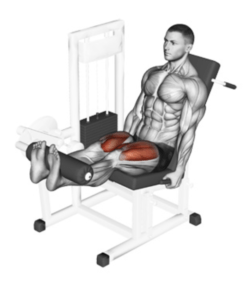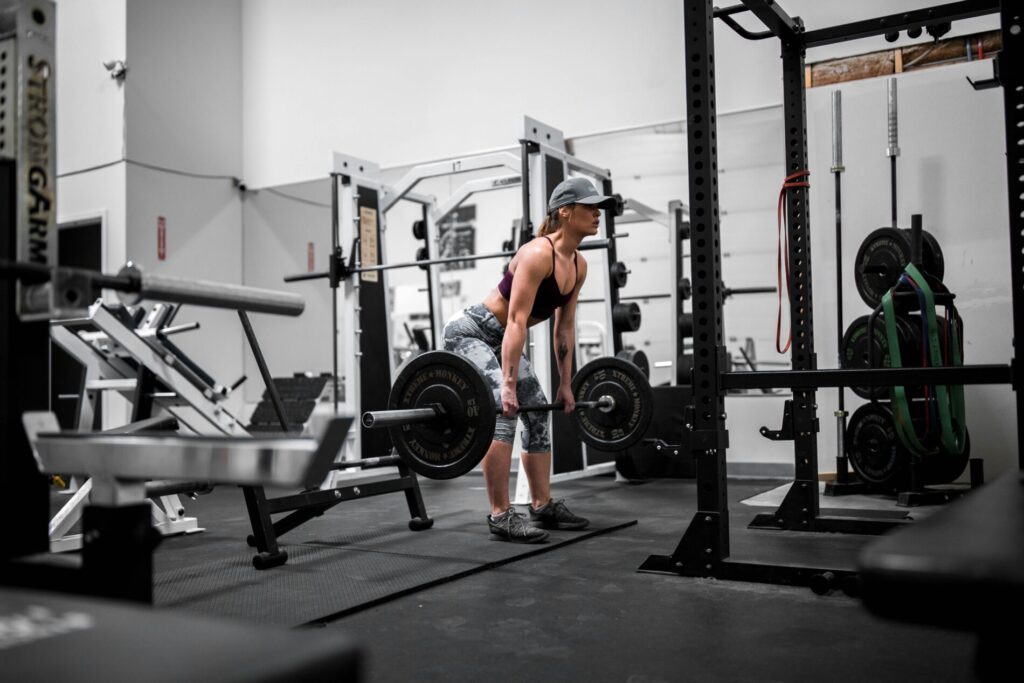My Least Favorite Exercise Part 2 – The Quadricep Knee Extension
Continuing with the theme of our last blog post My Least Favorite Exercise – The Clamshell, I’d like to highlight another popular exercise that should be avoided at all costs. This week, my least favorite exercise is the quadricep knee extension exercise. I regularly see people at the gym using the quadricep knee extension machine, and I truly worry about their orthopedic health when I’m watching them. To perform the machine based knee extension exercise, people sit in a chair with a pad on their shins. Next, they kick their legs straight against the resistance of the machine, contracting the quadriceps muscle. People perform this exercise because they want to improve the strength and size of their quadriceps muscle – some may even think it’s healthy for their knees; however, the biomechanical consequences of this exercise can be highly detrimental to the health of your knees.

Open vs. closed chain exercises
The machine based knee extension is a single joint, open chain exercise. Open chain exercises refer to movements where the distal extremity (hand or foot) is not fixed and is freely moving in space with or without external resistance. Examples of open chain exercises include a bicep curl, hamstring leg curl, and shoulder fly. Open chain exercises cause an isolated muscle contraction over a single joint of movement, which some believe to be beneficial in the early stages of an injury rehabilitation program. Open chain exercises are in contrast to ‘closed chain exercises’ where the hand or foot is fixed to the floor. Examples of closed chain exercises include the squat, deadlift, or push up. Closed chain exercises involve multiple muscle groups and require coordinated muscle contractions to complete the compound (multi-joint) movement.
The forces imparted on the joints differ between open and closed chain exercises. For open chain exercises (quadricep knee extension) the force imparted by the weighted resistance is transmitted back up the leg and into the knee joint. This force can cause compression in the knee joint, putting increased pressure on the meniscus, ACL, PCL, and patella-femoral joint. In contrast, with closed chain exercises (deadlift) the force imparted by the external resistance is transmitted into the ground. For instance, in a deadlift, the force from the load is pressed through the feet into the ground rather than up the body into the knees and hips.
The second problem with the exercise is that it is a repetitive concentric exercise. Remember from my last post, concentric muscle contractions occur when the muscle is shortening and repetitive contractions over time can cause a shortening and tightening of the muscle fibers even while at rest. Ignoring the eccentric (muscle lengthening) component of a muscle’s function can be detrimental to movement patterns and ultimately put you at an increased risk of injury. Additionally, a short and tight quadriceps muscle can pull upwards on the patella, altering the mechanics of the patella-femoral joint and cause conditions such as patellar tendinitis which is also known as Jumper’s knee.
What to do instead – deadlifts, squats, single leg squats, reverse lunges
If you want to strengthen your quads and the rest of the muscles in your leg, the best exercises are closed chain, compound movements that integrate the feet, hips, and core to create a functional and stable lower body. My favorites are deadlifts and lunges because you can add a lot of weight without placing much force on the knee joint (when performed properly). 
As I said previously, closed chain exercises like the squat and lunge transmit force down into the ground, which is why they are popular for building speed and explosiveness in strength and conditioning programs.
Post written by Dr. Riley Kulm, DC.
Check out Dr. Riley Kulm’s bio here.

